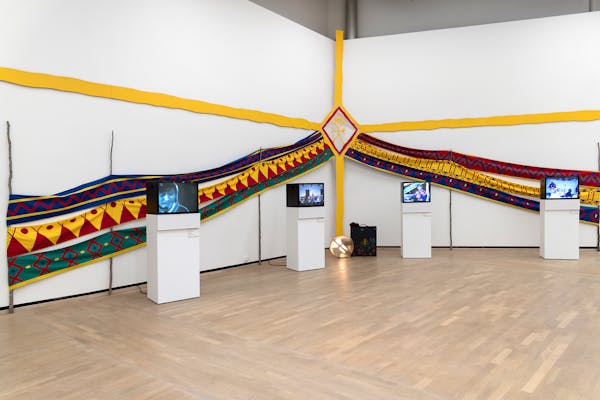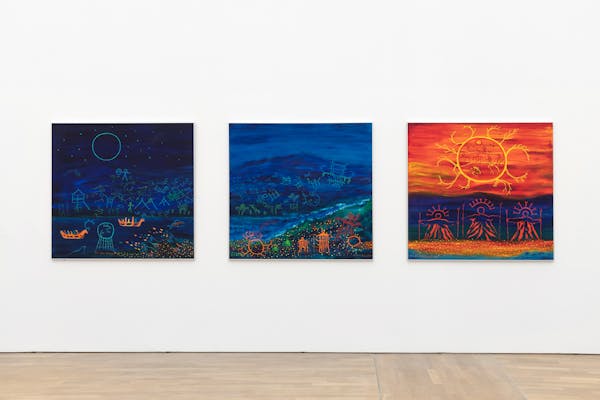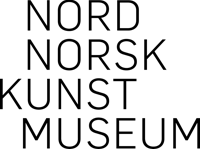Nils-Aslak Valkeapää / Áillohaš
Retrospective

↑ Nils-Aslak Valkeapää / Áillohaš, Skisse, 1983.
Stiftelsen Lásságámmi / Lásságámmi Foundation.
The Henie Onstad presents a big retrospective exhibition about the Sami artist Nils-Aslak Valkeapää / Áillohaš (1943-2001).
You can buy the museum ticket online or at the counter when you arrive. Please note that some events have limited space and require a separate ticket.
- Adults 160,-
- Students 80,-
- School classes/below 18 Free
- Members Free + 1
The artist is seen as a cultural icon and nation builder in Sápmi.1 He was an innovator of Sami joik and visual art, as well as a Nordic pioneer in poetry, artist books and sound art. His work is of great relevance today, both within the field of art and as an advocate for the rights of Indigenous peoples. Witht his exhibition, Henie Onstad Kunstsenter will highlight his importance in the Nordic countries as well as in a larger global perspective.
The Sami artist Nils-Aslak Valkeapää / Áillohaš was born in 1943. Throughout Áillohaš’ works one can always find a deep respect for nature, ecology, animals and humans.
Áillohaš was born into a reindeer-herding family. His mother Ellen Susanna was from Ulisuolu/Uløya in North Troms, Norway, while his father Johannes came from the Gárasavvon/Karesuando area on the Finnish side of Sápmi. As Áillohaš did not have it in him to kill animals, he studied to become a teacher in order to connect with literature, visual art and music.
After graduating in 1966 Áillohaš dedicated himself to forefront Sámi traditions and rights. He was central in the establishing of publishers, unions and festivals with the aim to strengthen Sami culture as he fought for the rights of indigenous people on a global scale. In addition he left behind a remarkable artistic legacy of his interdisciplinary art work.
Áillohaš was an innovator within the Sámi tradition of music, literature and visual art, and a Nordic pioneer in the fields of artists books, sound art and poetry. Nils-Aslak Valkeapää / Áillohaš died in 2001 and his work is of great relevance today.

Photo: Rolf Chr. Ulrichsen / Aftenposten / NTB scanpix

Hábmejuvvon riehkki / Processed driftwood, 44×107 cm. Lásságámmi vuođđudus / The Lásságámmi Foundation. Photo: Øystein Thorvaldsen / Lásságámmi vuođđudus / The Lásságámmi Foundation.
The exhibition is the most extensive presentation of Áillohaš’ works—until now. Here one can experience the interdisciplinary practice and activism found in Áillohaš’ art. As he himself expressed it: “In our cultural tradition, everyone is an artist… The way of life is art.”
It is rare to experience, to such an extent, the legacy of Áillohaš in one exhibition. His radical strategy was to not have a gallerist. Thus this exhibition consists of a long line of private, as well as public deposits from Sápmi. After the exhibition at the Henie Onstad Kunstsenter the presentation will travel to Nordnorsk Kunstmuseum in Romsa/Tromsø in the north of Norway.
-
Nils-Aslak Valkeapää / Áillohaš. Matti Aikio made the video portrait Lásságámmi - Áilus lille fyrtårn. Hilde Skancke Pedersen reconstructed her scenografi from Festspillene i Nord-Norge in 1991.
-
Main curators are Lars Mørch Finborud and Geir Tore Holm (HOK) in collaboration with Lise Dahl and Jérémie Michael McGowan (NNKM).
Fra butikken
References
-
Sápmi refers to the areas where the Sámi people have traditionally lived, and stretches over four countries: Norway, Sweden, Finland and Russia.









































